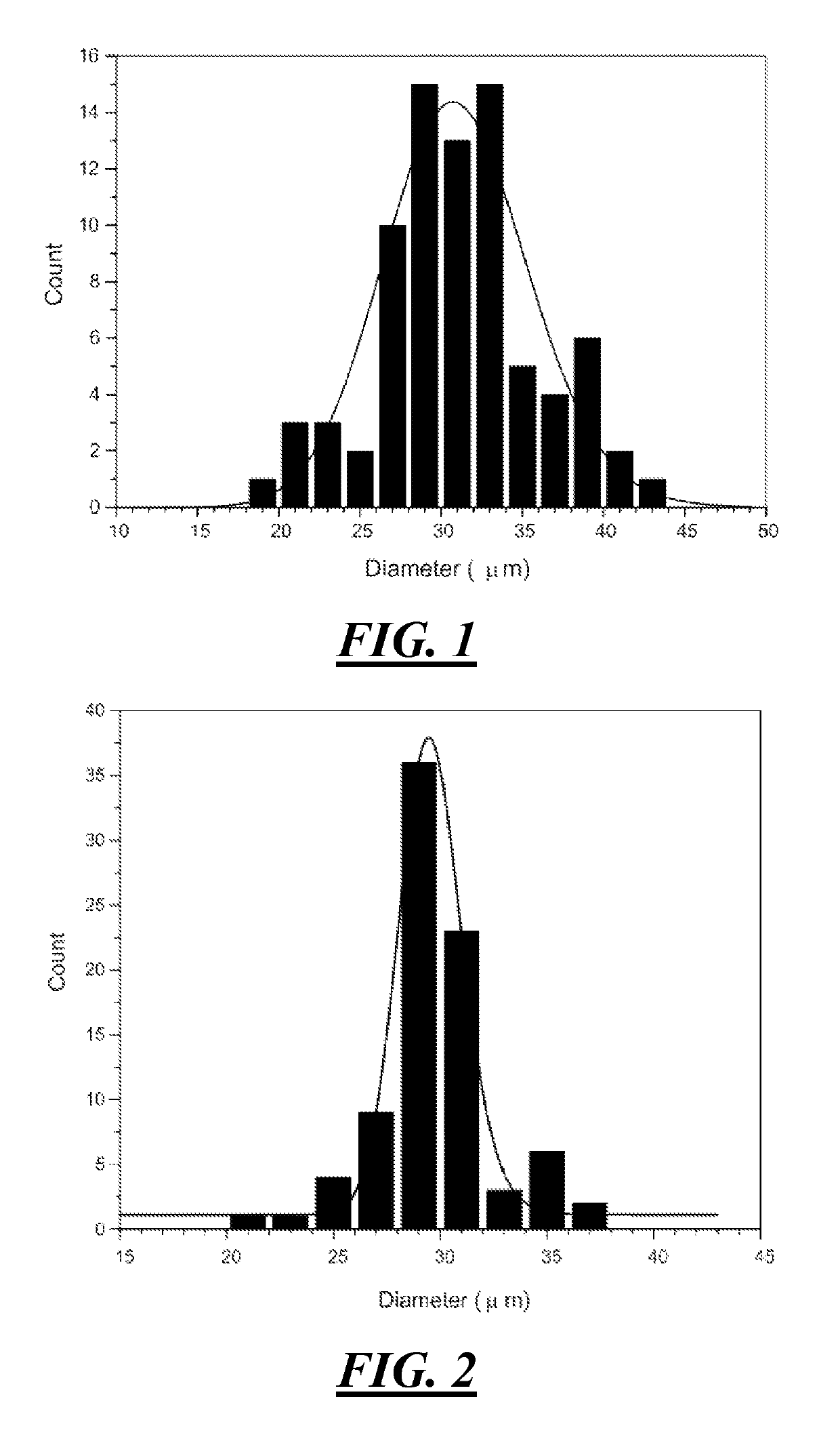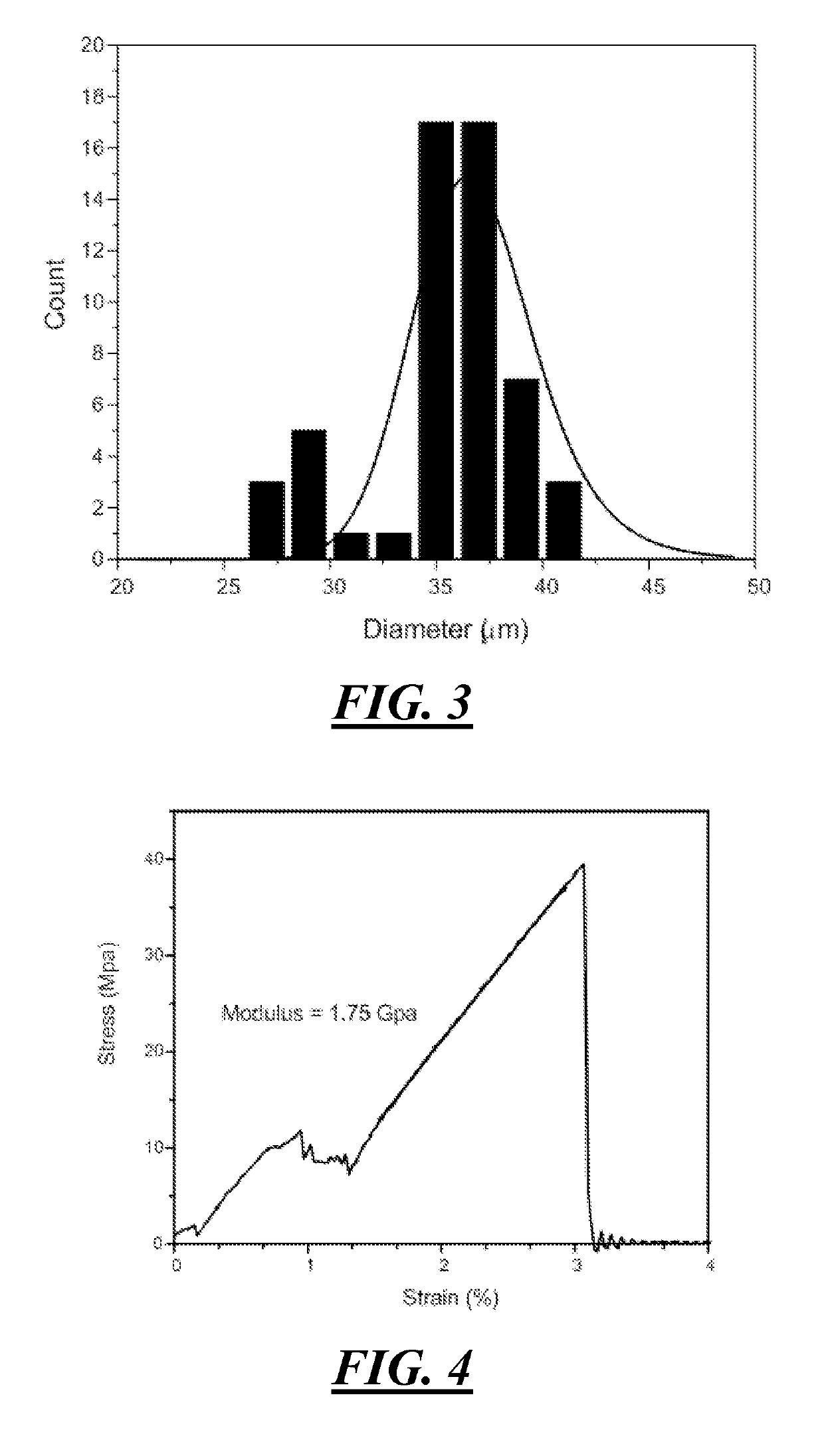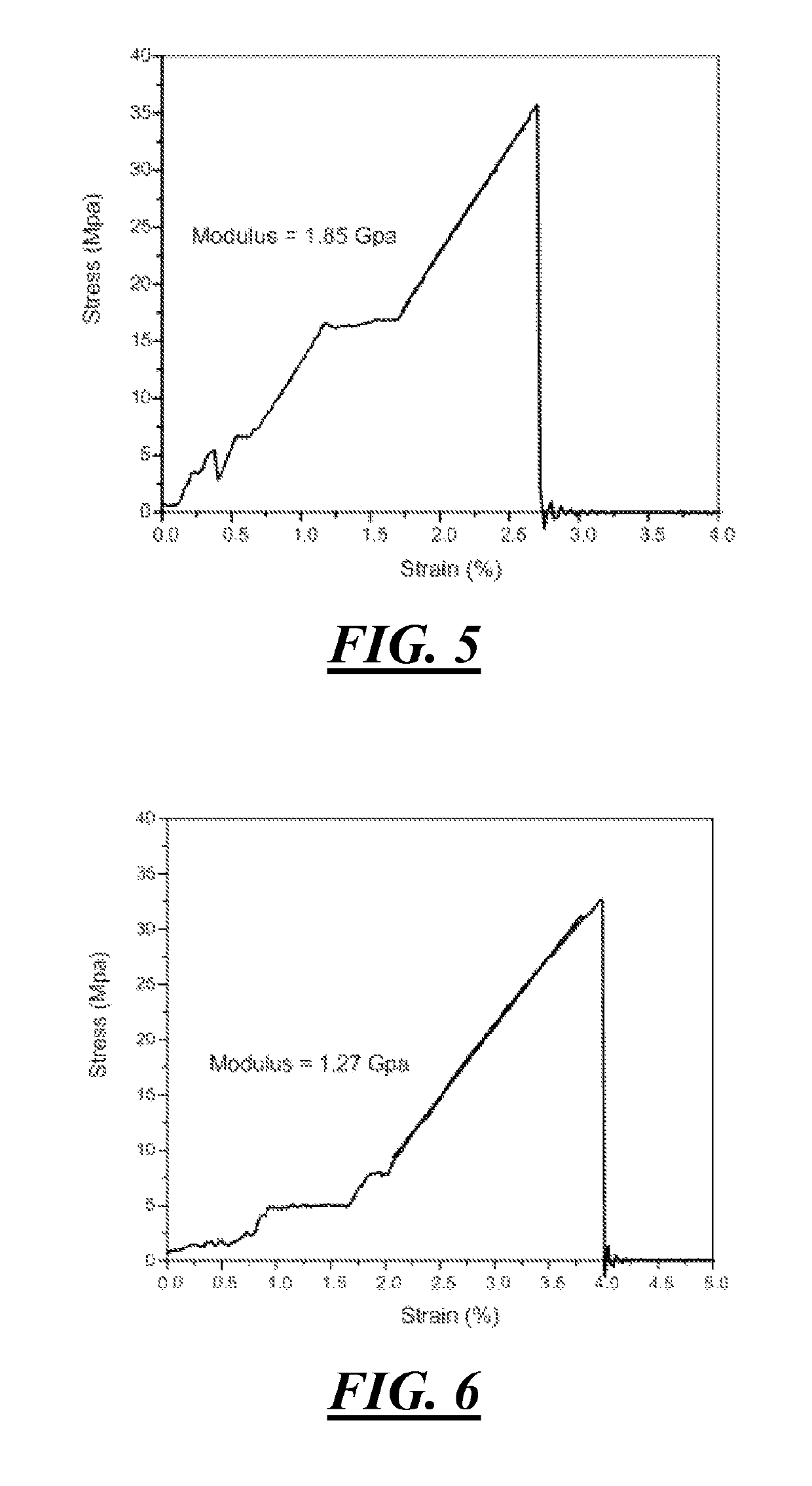Stabilization of lignin fibers
a technology of lignin fibers and stabilizers, which is applied in the field of lignin fibers, can solve the problems of fiber shrinkage, lignin fiber loss of fiber form, time-consuming process for stabilizing lignin fibers, etc., and achieve the effects of stabilizing lignin fibers in a relatively short period of time, increasing the strength of fibers, and maintaining the diameter and length
- Summary
- Abstract
- Description
- Claims
- Application Information
AI Technical Summary
Benefits of technology
Problems solved by technology
Method used
Image
Examples
Embodiment Construction
[0030]In order to conduct the stabilization process according to the disclosure, the lignin fibers are exposed to an acidic gaseous atmosphere containing hydrochloric acid (HCl) during thermal stabilization. Gaseous HCl can be obtained from various sources including commercially available pure, dry HCl gas. For purposes of the tests described below, the HCl gas was generated by bubbling air at room temperature (a temperature ranging from about 20 to about 40° C.) through a concentrated solution of HCl in water (about 37 wt. % HCl in water). The stabilized lignin fibers are made by heating the fibers to a temperature ranging from about 100° to about 220° C. while contacting the fibers with an atmosphere of the acidic gas comprised of air bubbled through concentrated hydrochloric acid for a period of time sufficient to stabilize the lignin fibers. The HCl is believed to help remove the —OH groups in lignin fiber (polymer) and further promote the crosslinking of lignin fiber at lower t...
PUM
| Property | Measurement | Unit |
|---|---|---|
| temperature | aaaaa | aaaaa |
| temperature | aaaaa | aaaaa |
| temperature | aaaaa | aaaaa |
Abstract
Description
Claims
Application Information
 Login to View More
Login to View More - R&D
- Intellectual Property
- Life Sciences
- Materials
- Tech Scout
- Unparalleled Data Quality
- Higher Quality Content
- 60% Fewer Hallucinations
Browse by: Latest US Patents, China's latest patents, Technical Efficacy Thesaurus, Application Domain, Technology Topic, Popular Technical Reports.
© 2025 PatSnap. All rights reserved.Legal|Privacy policy|Modern Slavery Act Transparency Statement|Sitemap|About US| Contact US: help@patsnap.com



